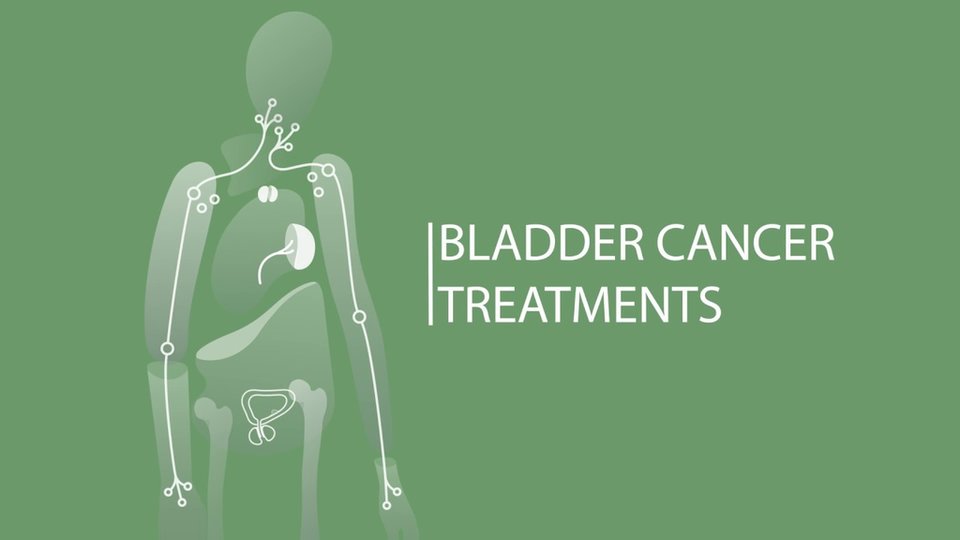| FEATURE |
Bladder cancer is the fifth most common cancer in the United States. More than 80,000 people will be told they have this disease in 2019. Bladder cancer is more common in males than females—3 times more men than women tend to get this disease. As with most cancers, being diagnosed early with bladder cancer gives you more treatment options and better outcomes.
An estimated 75-80 percent of patients with bladder cancer have what is known as non-muscle invasive bladder cancer (NMIBC). It is found in the tissue that lines the inner surface of the bladder. It has not spread to the bladder muscle or outside the bladder. This means there are several treatment options that do not require taking out the bladder.
Which type of treatment the doctor will recommend depends largely on whether you are considered at low-, intermediate-, or high-risk for the cancer coming back and progression of the disease, according to Benjamin Ristau, M.D., M.H.A., Assistant Professor of Surgery and Urologic Oncology at the University of Connecticut.
“This is based on a number of factors including tumor size, the number of areas in which the cancer can be found, aggressiveness of the tumor (also called tumor grade), and the extent of the cancer (also called tumor stage),” he said. “A patient’s general health, age, and goals of care are also important components of any treatment decisions.”
Surgery for NMIBC
The first step in diagnosing and treating NMIBC for all patients is endoscopic surgery. The surgeon uses a thin tube called a cystoscope that passes through your urethra into your bladder. The tube has a light at the end so that your doctor can see more clearly. The surgeon examines the bladder, takes tumor samples and removes all of the tumor that can be seen. This procedure is called transurethral resection of the bladder tumor (TURBT).
For many patients, treatment consists of TURBT in combination with intravesical therapy to lower the risk the cancer will return. With this treatment, the doctor puts a liquid drug directly into the bladder, through a catheter. The drug works on the cells that line the bladder, without having major effects on other parts of the body. This avoids the types of side effects often caused by other types of chemotherapy, such as hair loss. There are two types of intravesical therapy: chemotherapy and immunotherapy.
Intravesical Chemotherapy
Postoperative intravesical chemotherapy is recommended for patients with low- and
intermediate-risk NMIBC.
Either immediately or soon after the surgery, the surgeon will put a catheter into the bladder through the urethra to start the intravesical therapy while you are still under anesthesia. You hold the drug in the bladder for an hour or two, and then pass it out. You usually can go home that same day.
The most common types of postoperative intravesical chemotherapy used to treat NMIBC are gemcitabine and mitomycin C, Dr. Ristau says. “These drugs have been shown to reduce recurrences of non-muscle invasive bladder cancer when given in the immediate postoperative setting,” he said. One study found a 12 percent reduction in the risk of recurrence in patients treated with gemcitabine. Other studies have found treatment with mitomycin C reduces the risk of recurrence by 10-15 percent.
Dr. Ristau notes that intravesical gemcitabine has fewer side effects compared with mitomycin C. Side effects for both types of chemotherapy are usually minor and may include an increase in the need to urinate, and the urge to urinate more often. These side effects usually stop several days after treatment.
Your doctor will typically ask you to return in three months for a cystoscope exam to make sure your disease has not returned.
Intravesical Immunotherapy
For people who are intermediate- or high-risk, the doctor may recommend intravesical immunotherapy. This treatment causes the body’s own immune system to attack the cancer cells. Bacillus Calmette-Guerin (BCG) is the immunotherapy drug used for bladder cancer. BCG also has been used as a tuberculosis vaccine.
The treatment does not begin until you are fully healed from surgery, usually 2 to 4 weeks after surgery. It is done in the doctor’s office, not in the hospital or operating room, once a week for 6 weeks. This is called induction treatment. The drug is put into the bladder through a catheter. You hold the drug in your bladder for 1 or 2 hours, and then pass it out.
You may have side effects such as an increase in the need to urinate, and the urge to urinate more often. These side effects usually stop several days after treatment. Occasionally, intravesical immunotherapy may cause flu-like symptoms such as fatigue and a low-grade fever.
If your bladder remains free of cancer, your doctor may suggest more treatment (called maintenance therapy) to keep the tumor from coming back. Depending on your chance of recurrence, you may be asked to return for a cystoscope exam every 3-6 months for 2 years, then 6-12 months for year 3 and 4 and then every year after.
If you are high-risk, your doctor may ask you to come back every 3 to 4 months for 2 years then every 6 months for years 3 and 4 and annually after that.
Patients in whom disease does recur may require surgery to have the bladder removed (called a cystectomy). In addition, Dr. Ristau advises talking with your doctor about enrolling in a clinical trial. This may allow some patients to keep their bladder.
“The definitive treatment for patients with high-risk disease recurrence after BCG is removal of the bladder. Enrolling in a clinical trial involving a bladder-sparing approach is a good alternative option for some patients,” he notes. “A treatment such as BCG reduces the risk of recurrence by 50-60 percent and decreases the risk of progression to higher stage disease by about 30-40 percent,” Dr. Ristau said. “It can be a burden to come in so often for treatment, but the tradeoff is that patients get to keep their bladder. Most people decide it’s worth it.”
More Information
For more information about Immunotherapy Treatment or Bladder Cancer Treatments, check out our video below and watch more of our videos at youtube.com/urologycarefoundation.

Important Message about BCG
BCG is a standard treatment option for non-muscle invasive bladder cancer. Merck & Co., the only maker and supplier of BCG to the United States, has shared with the Urology Care Foundation that they are now experiencing a shortage of BCG due the growing use and need for this product around the world.
While Merck has raised their production of BCG, they expect this shortage to carry through 2019.
The Foundation is very concerned about this medication shortage, and we understand this situation can be stressful for patients and physicians. To help minimize disruptions to patient care, the Urology Care Foundation has been working closely with the American Urological Association (AUA), American Association of Clinical Urologists, Bladder Cancer Advocacy Network and the Society of Urologic Oncology to develop strategies to help providers treat patients with bladder cancer while this supply constraint continues.
In addition, efforts to engage the U.S. Food and Drug Administration in identifying and approving other sources of BCG are ongoing. The Urology Care Foundation remains in contact with the AUA and Merck, and will share more news on its website: UrologyHealth.org as it becomes available.
For further information about BCG, you may contact Merck’s National Service Center at 1-800-444-2080.
UrologyHealth.org | SPRING 2019 | UROLOGYHEALTH extra

